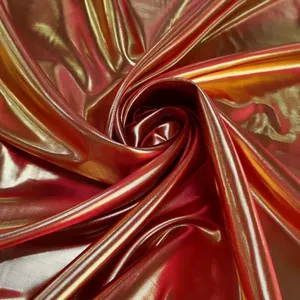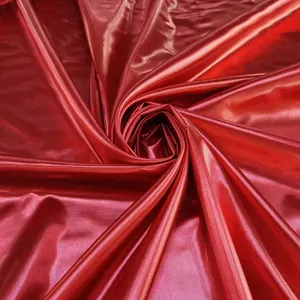
All categories
Featured selections
Trade Assurance
Buyer Central
Help Center
Get the app
Become a supplier

(64993 products available)



















































The world of packaging and printing is vast, and among its many components, textile foil plays a crucial role. Known for their decorative and functional attributes, textile foil are a type of metallic foil used to add a touch of elegance and sophistication to various printed materials. These foils are typically applied to surfaces such as paper, plastic, or fabric through a method called hot stamping. By applying heat and pressure, the foil adheres to the surface, leaving behind a striking metallic finish. This technique is widely used in industries ranging from publishing to packaging, enhancing the visual appeal of products and making them stand out in competitive markets.
When it comes to textile foil , the variety available is extensive, catering to different aesthetic and functional needs. Common types include metallic foils, holographic foils, and pigment foils. Metallic foils are highly popular, available in gold, silver, and other metallic shades, and are often used for luxury packaging and high-end book covers. Holographic foils create a dynamic, shimmering effect that changes with light, making them ideal for eye-catching labels and promotional materials. Pigment foils, on the other hand, provide solid, non-metallic colors, offering a more subdued look for applications where subtlety is desired. Each type of textile foil is designed to meet specific design requirements, ensuring versatility across various industries.
The primary function of textile foil is to enhance the visual appeal of printed materials, but their benefits extend beyond mere aesthetics. These foils provide a durable, long-lasting finish that resists fading and wear, ensuring that the print remains vibrant over time. textile foil also offer excellent adhesion properties, making them suitable for a wide range of substrates, including paper, plastic, and textiles. Additionally, the reflective qualities of metallic and holographic foils can add depth and dimension to designs, making them more engaging and memorable. With advancements in foil technology, it is now possible to achieve high-resolution images and intricate patterns, further broadening the creative possibilities for designers and manufacturers.
The production of textile foil involves several key materials and ingredients that contribute to their unique properties. The base material is typically a thin film of polyester, known for its strength and flexibility. This film is coated with a layer of metallic or pigment material, which is responsible for the foil's color and reflective properties. Adhesives are also a critical component, ensuring that the foil adheres properly to the target surface during the stamping process. In some cases, additional layers such as release coatings are applied to facilitate the transfer of the foil to the substrate. The choice of materials affects the foil's performance, durability, and appearance, allowing manufacturers to tailor textile foil to specific applications and industry standards.
Applying textile foil effectively requires understanding the various techniques available and selecting the appropriate method for the desired outcome. Hot stamping is the most common technique, involving the use of a heated die to transfer the foil onto the substrate. This method is favored for its precision and ability to produce sharp, clean images. Cold stamping, on the other hand, uses a UV-curable adhesive to apply the foil without heat, making it suitable for heat-sensitive materials. Digital foil printing is an emerging technology that allows for on-demand, customizable foil applications, ideal for short runs and personalized products. Each technique offers distinct advantages and limitations, making it essential to choose the right approach based on the materials, design complexity, and production requirements of the project.
Understanding the nuances of textile foil selection is essential for achieving the desired visual and functional outcomes. The first consideration should be the intended application. Different projects may require specific types of foils, such as metallic, holographic, or pigment options. Metallic foils, for instance, are ideal for luxury packaging due to their reflective qualities, while holographic foils can create dynamic effects for promotional materials. Pigment foils offer solid colors that suit designs where subtlety is key. Evaluating the project's design requirements and the substrate's compatibility with various foils is crucial in making an informed choice.
When selecting textile foil , several factors should be considered to ensure optimal performance and aesthetics. The substrate material is a critical factor, as foils must adhere effectively to surfaces like paper, plastic, or textiles. The type of adhesive used in the foil can significantly impact adhesion quality, especially for challenging substrates. Additionally, the desired finish—whether glossy or matte—can influence the choice of foil. It's also important to consider the foil's durability and resistance to fading, particularly for products exposed to environmental elements. By matching these factors with the project requirements, the selection process becomes more strategic and effective.
As sustainability becomes increasingly important, choosing textile foil that align with environmental goals is vital. Some foils are designed with eco-friendly materials and processes, reducing their environmental impact. It's crucial to verify the sustainability claims of foils, ensuring they meet recognized standards and certifications. Additionally, understanding the recyclability of the foil and its compatibility with existing recycling systems can guide decisions toward more environmentally responsible options. Balancing aesthetic appeal with ecological responsibility is a growing concern, making it an essential consideration in modern foil selection.
textile foil can significantly enhance product packaging by adding a luxurious and eye-catching finish. The metallic and holographic effects can elevate the visual appeal, making products stand out on shelves and attract consumer attention.
Most textile foil are compatible with a variety of substrates, including paper, plastic, and textiles. The key is to ensure that the foil's adhesive properties match the substrate to achieve optimal adhesion and durability.
Yes, there are eco-friendly textile foil options available that utilize sustainable materials and production processes. These options aim to minimize environmental impact while maintaining the foil's visual and functional qualities.
Customization of textile foil is possible, allowing for unique designs and branding elements to be incorporated into the foil. This flexibility can enhance brand visibility and create a distinctive product appearance.
Applying textile foil can present challenges such as ensuring proper adhesion and achieving the desired finish. Factors like temperature, pressure, and the substrate's surface texture can greatly influence the success of the application process.